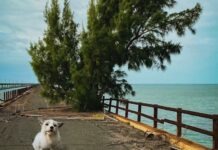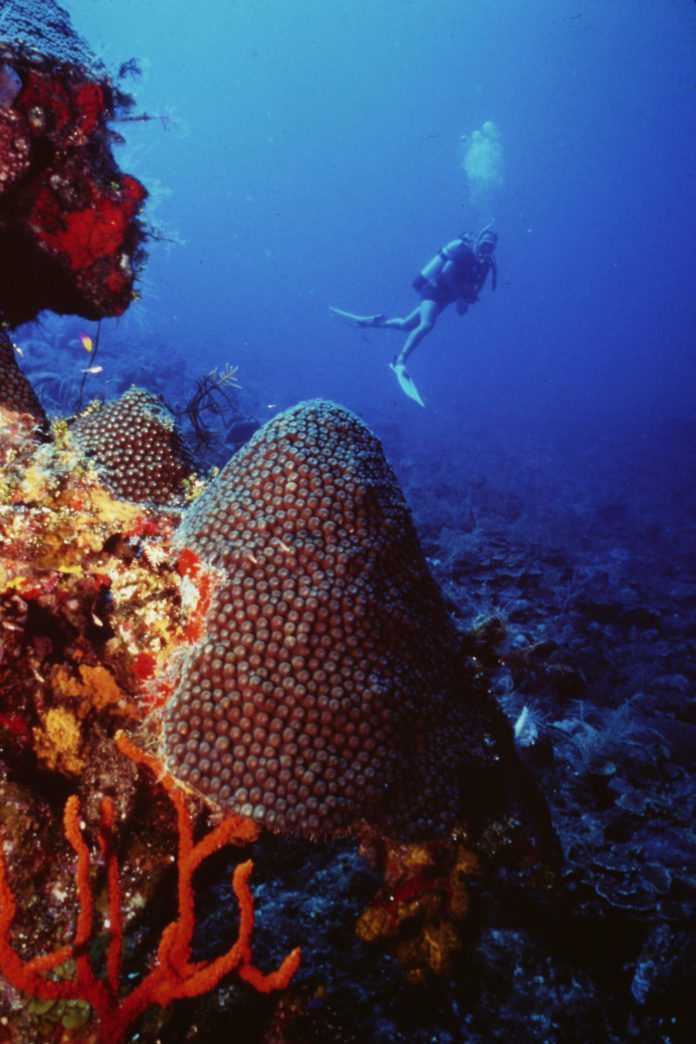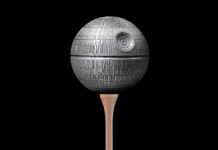Editor’s note: This is part one and two of a series of articles about diving in Cuba excerpted from Gustavo Gotera’s work.
By Gustavo Gotera
The recreational diving in Cuba has an endless future because of its coral reef system, which is the longest, the best preserved, the most attractive in the Caribbean Sea and, perhaps, in the world. There are 24 major dive zones surrounding and within Cuba’s waters. Recreational diving is one of the most popular activities nowadays in Cuba and with its increasing tourist development has become an option at all its beach resorts.
Currently, there are more than 38 dive shops located near two dozen different dive sites. The dive charters offer everything from resort courses to advanced and specialty dives. The dive instructors have certifications such as ACUC, CMAS, NAUI, PADI and SSI and most speak several languages.
Diving in Cuba’s seas affords you everything that you can imagine: coral gardens, immense drop-off walls, caverns, gorgonian and sponge prairies, shipwrecks, channels, tunnels and many other wonders.
HAVANA
The whole coastal zone along the Havana shoreline east to Varadero has well preserved coral reefs. The depths range in steps from 33 to 115 feet. There are certain times of the year you can dive with big whales escorted by schools of tuna.
Fifteen miles to the east in the Playas del Este, there are two diving centers in the Tarara Villa — The Tarara Diving Center and the Megano Diving Center. Both are associated with hotels that have good amenities such as restaurants, bars, gyms, and, of course, a lovely sandy beach. The diving sites here have a lower profile and the coral is somewhat less developed, but the reefs are healthy and very colorful. The visibility is 60-feet plus.
One of the best sites is El Canto de Itabo at a depth of 50 feet which is an oasis among the sand beds where you will discover lots of fish, lobster and other crustaceans. Another is El Canto de Marazul at 98 feet and a third fun site is Canal de Guanabo (49 to 82 feet) both of which are equal in visual opportunity as El Canto de Itabo.
For wreck divers there is an 18th century vessel full of undersea life, as can be expected, in 46 feet. It is located off of Bacuranao.
In the eastern part of Havana Province you’ll find the Breeze Jibacoa Diving Center, an all-inclusive hotel resort. It takes divers out to the reefs three times per day showing off first class dive sites. This is also a great location for those who truly enjoy nature at its best.
The last major and well-known dive site in the eastern sector of Havana Province is Bacunayagua. This dive spot has an intense coral growth beginning at the coastline, then forming small underwater hills separated by narrow channels making an intriguing labyrinth. At 33 feet, the coral hills make way to sea plant prairies and sand beds full of large populations of queen conchs. The deeper you dive, you will see more lobsters and crabs along with a plethora of parrotfish, groupers, snappers, etc. On night dives you will probably encounter pink shrimp. This dive site can be accessed directly from the shore.
Dive shops near Havana
Although not dive shops in the American sense of the word, these businesses offer the same charter services minus the retail opportunities to buy the latest and greatest gear.
- Reef Diving Center in Salado Beach is 15 miles west of the City of Havana. It is great for beginners as it encompasses shore diving and shallow coral reefs.
- La Aguja Diving Center is located at Marina Hemingway in the Santa Fe section of Havana some six miles away to the west. This dive operation is well equipped for travel to all the dive sites along the Havana shoreline.
- The Club Habana Diving Center at the former Biltmore Yacht and Country Club off Quinta Avenida (5th Avenue) offers very customized diving services.
- The Copacabana Diving Center located in the Miramar section off Quinta Avenida is part of the hotel namesake.
Varadero has beautiful diving sites
Cuba is the biggest island in the Caribbean Sea. It is a long archipelago composed of more than 200 keys and islets with 280 fine sand beaches plus over 200 harbors that make for beautiful diving.
Recreational diving in Cuba commenced at the beginning of the 1970’s near Varadero in Matanzas Province just east of Havana Province. But in 1977 more serious work began with detailed surveys on the Isla de La Juventud, formerly the Isla de Pinos ( Isle of Pines ). Canadian and American SCUBA divers arrived soon after at the Hotel Colony, which had been built as a personal investment and private playground by President Fulgencio Batista back in the 1950’s. Here the first diving center was established.
Cuba, lying on a long and exuberant virgin coral reef, is an undersea paradise. The tides are light and lack strong ocean currents, which make the dives very comfortable. The waters are relatively warm year round with temperatures not going much below 75 degrees F or above 80 degrees F. The lack of pollution and the deep upwelling of ocean water creates a horizontal medium visibility of 90 feet. In Cuba, there are 50 remarkable coral species which form an incredible array of structures that shelter and support all the sea species and creatures.
MATANZAS / VARADERO
Varadero is located on the narrow long Peninsula de Hicacos in Matanzas Province 87.5 miles from Havana. Varadero is the main tourist resort town in Cuba, referred to by many as the “Cancun of Cuba,” with dozens of hotels and an international airport, miles of fine sandy beaches, three marinas and a golf course. All of the Varadero hotels offer very nice optional services such as sea safaris to nearby Keys on catamarans, sailboats, and even yachts. Also for those who may not partake in the diving activities, there is horseback riding or Jeep rides through the nearby forests and valleys. Exploring deep caves, for example, the “Cuevas de Bellamar” is also a popular pastime.
Diving off the coast of Varadero/Matanzas is certainly a pleasure with depths that vary from 33 to 131 feet at the coral reefs with opportunities to descend to 230 feet in the inland cenotes (sinkhole). There are 32 popular dive sites in the immediate vicinity plus caves, shipwrecks and a hyperbaric chamber in the nearby town of Cardenas.
Dive shops near Varadero
Although not dive shops in the American sense of the word, these businesses offer the same charter services minus the retail opportunities to buy the latest and greatest gear.
- Barracuda
- Gaviota
- Breeze Varadero
- Marian Chapelin
- Sandals Royal Hicacos
- Diving Tech/ Nitrox Coral
- Beaches Varadero
North coast offers more diving spots
In the continuing series of Diving in Cuba we travel to the archipelago Jardines del Rey (Gardens of the King) on the northern coast of Cuba. It stretches more than 100 miles and the major keys are Cayo Romano, Cayo Coco and Cayo Guillermo. Countless keys with beautiful beaches encompass this area of wonderful and peaceful sea environments.
Cayo Santa Maria is one of these islands with exceptional diving conditions. It is 18 miles long with fine sand beaches and a typical Caribbean type tropical forest. Access to this Key begins in Caibarien in Villa Clara Province and transverses a 30-mile manmade highway called the Pedraplen.
The Diving Center for the group of Keys sharing Cayo Santa Maria’s diving sites is located on Cayo Las Brujas. Cayo Frances and Cayo Borracho are the two other principle locations for recreational diving within the Cayo Santa Maria locale. There are no fewer than 14 established coral reefs with many more to be added to the list. These underwater locations are almost virginal and quite diverse in flora and fauna species. The possibilities of meeting up with large groups of dolphins, sea turtles, hammerheads, and bull sharks are good; but don’t worry, no shark attacks have been reported.
The diving zone starts of in a gentle slope with big hills of different coral structures grouped together to form narrow but long strips up to three miles in length. The dive sites are impressive — reefs range from 49 to 56-feet at El Hueco (The Hole ) to 49 to 92 feet at La Delfina and to 112 feet at El Acuario de Caiman and at El Cojin. Snappers, groupers, goliath groupers, stingrays, nurse and hammerhead sharks , and other pelagic fish gather here around the prolific array of hard and soft corals.
Cayo Las Brisas has a small 21-room villa overlooking a cliff on the azure Atlantic Ocean while nearby Cayo Santa Maria has all-inclusive hotels, the Sol Club and the Melia Cayo Santa Maria offering all the goodies you would expect. There is a small airport at Cayo Las Brujas
Nature aficionados will discover the archipelago has many interesting features. It contains the Caguanes National Park, a bio reserve with an important cave system, rare Cuban animal and plant species and many interesting archeological sites related to the original pre-Colombian native populations.
Diving centers:
- Diving Center Sea Lovers
- Diving Center Blue World
- Diving Center Eagle Ray / Coral Reef
—————————-
Guardalavaca features virgin reefs
Christopher Columbus landed on the beaches of Guardalavaca on the northeast coasat of Cuba during his first voyage to the New World more than 500 years ago. The amazing warmth and charm of Guardalavaca persist to this day. It is an attractive place with rocky cliffs that abruptly divide to form white sandy beaches bordered by lush tropical forests and sugarcane fields.
The diving zone stretches 11 miles along the coast. It has an irregular and complicated underwater arrangement with high hillocks, caverns, small valleys and fantastic wall cliffs. In other areas the platform goes down slowly to terraces of healthy flora and fauna. Each of the 32 diving sites is a beautiful show of life and color.
Among the most engaging diving sites are:
- Coral Gardens (16 to 49 feet) where you will cruise over elkhorn, brain and pillar corals, sea fan prairies, and observe many coral reef fish along the sparkly labyrinth.
- The Aquarium (49 feet) takes its name from the abundance of fish and floral and faunal life.
- Siena Reef is a 131-foot deep wall filled with sponges, soft corals, black coral and various reef fish species.
- Canto Azul Reef has an incredible wall (49 to 131 feet) cut by coral canyons with sand beds contrasted by the deep blue sea. You may, perhaps, have a friendly five-foot moray eel follow you out of its hole along the drop off.
Again, there many alternative activities for everybody to enjoy such as water sports, sport fishing, catamaran excursions. Visits to Cayo Saetia National Park will satisfy your hunger for the exploration of a tropical forest. Close by is Bahia de Naranjo Tropical Aquarium for those that don’t want to get wet. Admission to the aquarium includes a sea lion and dolphin show.
The hotel resorts are operated by well-known Cuban companies such as Cubanacan and Goviota as well as by some international operators including Sol Melia, Super Clubs, LTI, and Club Med. So, you know that your experience will be fulfilling.
Guardalavaca can be easily reached via roadways from Holguin city and elsewhere east and west. Holguin City has an international airport only 36 miles away. And for seafarers there is the Marina de Vita at Guardalavaca.
The resorts offer three diving centers to accommodate their SCUBA diving guests:
Diving Center Sea Lovers
Diving Center Blue World
Diving Center Eagle Ray / Coral Reef
——–
— Gustavo Gotera was born in Havana in 1953. He is a former marine biologist who became a diving instructor and a renowned underwater photographer more than 30 years ago. He was very instrumental in the surveying of the coral reefs all around Cuba and the development of recreational diving in Cuba as well as being associated with the large-scale projects for education concerning Cuba’s coral reefs and ecology.
— Larry Benvenuti has ventured to Cuba 23 times to photograph the “above and below.” He met Gustavo Gotera on his third trip in June 1994. Larry has dived and photographed 14 of the 15 major dive zones of Cuba.


























